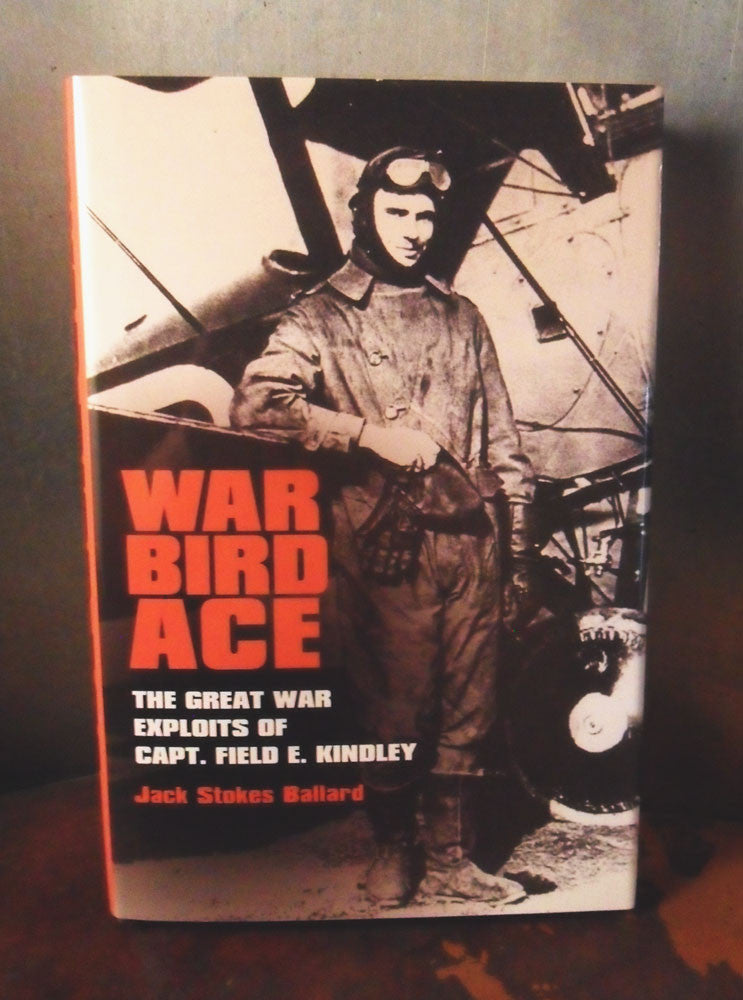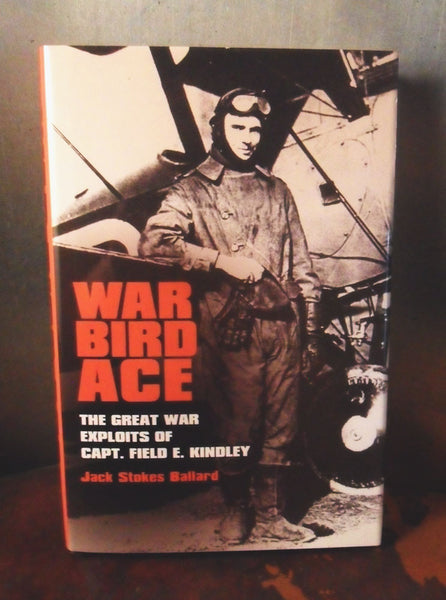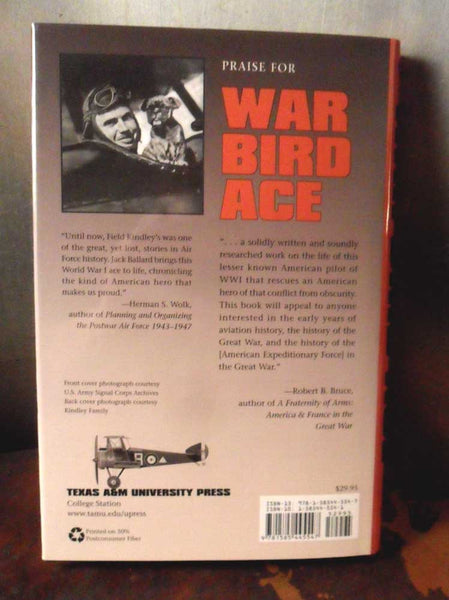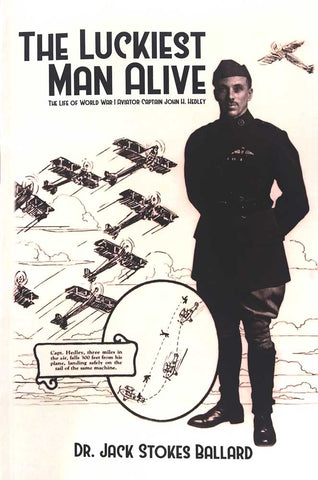Jack Stokes Ballard
War Bird Ace book
$29.95
War Bird Ace - Field Kindley - World War 1 aviation history book
War Bird Ace: The Great War Exploits of Capt. Field E. Kindley
By Jack Stokes Ballard
Texas A&M University Press, copyright 2007, 6.5 x 8.5 in, 208 pages, hardback
From the book's front matter:
There are only two ways left now of winning the war, and they both begin with A. One is aeroplanes and the other is America.
-- Winston Churchill, Munitions Ministry, September 1917
From the book jacket:
"At 8:57 A.M., July 13...a German Albatros plane came out of the clouds at Field in his Sopwith Camel. 'After climbing head-on over him, I half-rolled and shot two bursts of one hundred rounds into him at point blank range,' Kindley reported. 'Soon he and another [enemy aircraft] were on my tail, diving vertically at me...'"
Captain Field E. Kindley, with the famous Eddie Rickenbacker, was one of America's foremost World War I flying aces. Like Rickenbacker's, Kindley's story is one of fierce dogfights, daring aerial feats, and numerous brushes with death. Yet unlike Rickenbacker's, Kindley's story has not been fully told until now.
Field Kindley flew with the famous "War Birds" who trained in England and gained experience with the RAF before providing leadership for the U.S. Air Service. Flying Sopwith Camels throughout his war career, Kindley was the fourth-ranking American air ace, with twelve kills in close, air-to-air combat. His exploits earned him a Distinguished Service Cross with Oak Leaf Cluster from the United States and a Distinguished Flying Cross from the British government. By the end of the war, Kindley was showing signs of flight fatigue, but he declined leave in order to assure a postwar career in the Air Service. He was called to testify before Congress about the need to maintain aerial preparedness after the war.
In February 1920, after assuming command of Rickenbacker's famous 94th Aero Squadron at Kelly Field in San Antonio, Kindley led a practice drill during which some enlisted men unwittingly entered the bombing target area. "Buzzing" the troops to warn them off the field, he somehow lost control of his plane and died in the ensuing crash.
Using arduously gathered primary materials, as well as drawing from other accounts of Great War aces, Jack Ballard has told at last the story of this little-known hero from the glory days of aerial warfare. Through this tale, an era, as well as a daring flyer, live again.
Jack Stokes Ballard is a friend of the Vintage Aero Flying Museum. Until his retirement, his career was in the USAF and the aeronautics industry. He has had a lifelong fascination with Field Kindley. Ballard holds a PhD from the University of California - Los Angeles and taught history for five years at the Air Force Academy.







